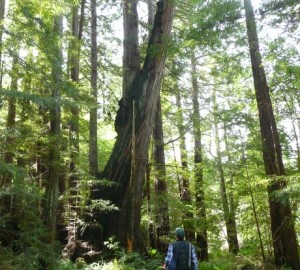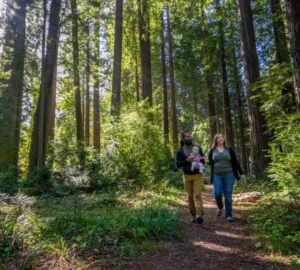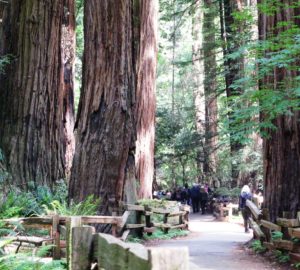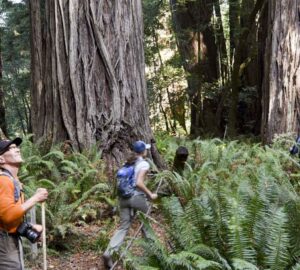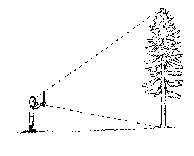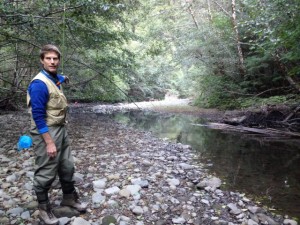
Last week, we drove into Humboldt Redwoods State Park at dusk to watch bats dart over Bull Creek. We joined up with USDA Forest Service researcher, Ted Weller, and his team as they studied local and migrating bats through the magnificent ancient redwood groves of Humboldt County.
Ted explained that their research is revealing which species of bats call the redwood forest home all year round and which ones fly through the forest and only stop in the redwoods for rest during their long migrations. The team uses mist nets suspended over the creek to safely stop the bats while they are flying so that the researchers to learn some vital statistics about each bat.
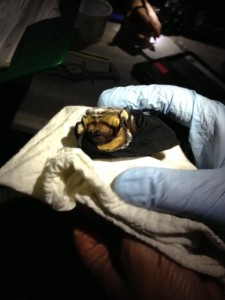
Once darkness fell over the woods, bats came out in force and we watched the researchers efficiently give each bat a health check up. Thirteen species of bats live in Humboldt County and within only an hour we had seen several species up close. The first was a hoary bat, which migrates through the redwoods and is most commonly seen in spring and autumn. Their golden fur made these bats especially adorable!
We also saw two species of small brown bats called California myotis and long-legged myotis. These two species looked very similar to the untrained eye (mine) and the researchers distinguished them by measuring the length of the bat’s ear, its forearm (part of the wing), and checking for the presence of an understated flap
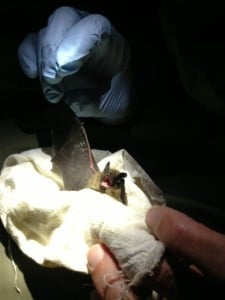
called a keel near the bat’s tail. The check up for these flying mammals wasn’t complete until each bat was weighed and inspected for signs of disease. I was truly amazed at how delicate and beautiful these animals are and was heartened to learn that if the thin bat wing membrane tears, it heals quickly. After each check up,the bats were gently warmed up and set free to fly back into the night.
This bat research was partially sponsored by Save the Redwoods League through its Research Grant Program which seeks to learn more about how to protect the plants and animals of the redwood forest. To learn more about this incredible bat research here.

